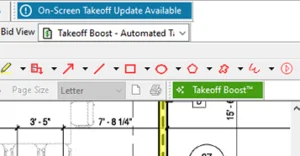It’s not surprising that the 2020 FMI Industry Report found that 57% of construction leaders listed “attracting and retaining skilled labor” as their No. 2 concern for future success. When asked their top three concerns, hiring came in just below maintaining jobsite safety (66%) and right above maintaining field productivity (52%).
These concerns about the lingering labor shortage come at a pivotal point for the construction industry. On one hand, more effort is being directed toward attracting the next generation of workers—from innovative trade-specific training programs to increased visibility into lucrative construction careers. There is also the impact of Silicon Valley pouring billions into new tech that could potentially streamline how construction projects are planned, designed, and built.
Meanwhile, the McKinsey Global Institute has found that builders’ productivity growth worldwide has averaged only 1% per year over the past two decades, compared to a 3.6% growth in the manufacturing sector. In fact, construction productivity in the U.S. has dropped by half since the late 1960s. As a result, the FMI study paints a bleak picture of what is ahead in 2020 with productivity stagnating, the labor shortage intensifying, and the cost of both materials and labor rising.
Construction Tech Could Bea Game-Changer
One thing is clear: with a diminishing labor pool, construction businesses that invest in the latest and greatest construction technology will likely have an easier time attracting top talent—such as in-demand estimators and project managers. Plus, the win-win of technology is that contractors who invest in tech will also be able to use it to more efficiently plan and execute projects.
While the FMI Report found that more than half—51.4%—are using technology to maintain a safe jobsite, only 25.6% are using technology to attract and maintain skilled labor. It is interesting that less than half—40.5%—of those surveyed are using technology to maximize field productivity.
While the industry is indeed leveraging construction software, the FMI Report concluded that many construction leaders appear unaware of the viable tech solutions now available. They view this as a missed opportunity when it comes to productivity and using tech to attract and retain workers.
Clearly, there are gaps in how construction leaders view and implement how technology is used in the field and in the back office. Study after study has found most construction firms—up to 90%— are worried about the lingering talent shortage. As projects become more complex and schedules more compressed, it is interesting that many in construction still choose to invest less than 1% of total revenue in technology, according to the JBKnowledge ConTech Report.
Competition Heats Up for All Positions
Just how tight is the labor market? With unemployment at its lowest rate since 1969 and construction backlogs averaging nearly nine months through 2019, it’s not surprising the demand for all types of construction workers has held steady—from craft workers to estimators and project managers.
Despite a tight labor market, overall construction employment increased in 231 out of 358 metro areas from October 2018 to October 2019. With construction employment growing 65% year-over-year, hourly craft worker positions are still difficult to fill, according to an analysis by the Associated General Contractors of America.
Ken Simonson, the association’s chief economist, explained: “Employers in most areas remain busy and eager to hire workers, but they struggle to find qualified employees in many metros.”
Wanted: Construction Estimators
Demand for all construction positions—from dirty jobs in the field to tech-focused office positions—is growing. This includes construction estimators, who play an essential role in the construction industry. Most estimators wear many hats—from finding projects to bid to making sure time, labor, and materials are counted correctly. An estimator’s speed and accuracy can have a big impact on whether a construction business wins the most profitable projects.
It appears the demand for great estimators isn’t slowing down anytime soon. In fact, Projections Central reports more than 24,000 cost estimator job openings in the U.S. By 2026, they predict a need for 240,800 estimators, an increase of 10% over the current number.
In fact, a quick search on Indeed for construction estimators in the United States will turn up nearly 6,000 job openings. Of course, this reflects a wide range of roles—from senior estimators to entry-level positions and specialized jobs ranging from earthworks to cladding.
As a result of this growing demand, estimator salaries are rising. Indeed.com ranked construction estimator as No. 12 on its Top 25 Jobs List for 2018 and as No. 19 in 2019. Base salaries, they said, rose nearly 9% from 2018 to 2019—from an average of $78,052 in 2018 to $84,963 in 2019.
Attracting the Best Talent with Tech
Faced with a tight labor supply and strong competition, how can construction firms get ahead of the hiring game? The FMI Report found 47% of survey respondents believe that having a technology partner and tech tools has a positive impact on talent acquisition and retention.
Even more—62%—believe technology increases employee engagement and job satisfaction.
Perhaps the most compelling finding was that 68% believe having a tech partner can have a major impact in sustaining superior financial performance.
It seems clear that construction firms that embrace technology will not only be more competitive when it comes to hiring for all roles in 2020, they could also see stronger productivity and greater profits in the new year.
No matter the size of your construction business or trade, odds are you will need a hiring strategy when it comes to attracting, finding, and retaining the right talent. If you’re under pressure to improve your hiring process in 2020, be sure to download our 2019 How to Hire a Great Estimator Guide now for great in-depth, real-world hiring best practices.



